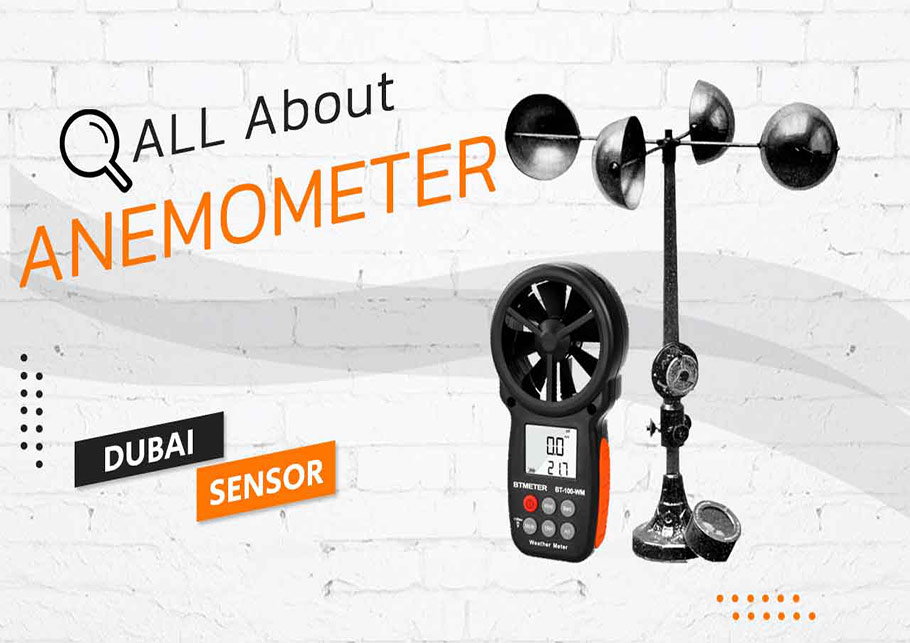Leading Functions to Search For in a Reliable Anemometer for Accurate Wind Dimension
Leading Functions to Search For in a Reliable Anemometer for Accurate Wind Dimension
Blog Article
All You Required to Understand About Anemometers: How They Work, Why They Matter, and Where to Utilize Them
Anemometers, though frequently overlooked in the realm of scientific tools, play an essential function in numerous fields, offering important insights into wind rate and air flow patterns. Comprehending the technicians behind these devices is vital for anybody looking for to harness the power of this data. From meteorologists tracking climate patterns to designers creating frameworks with wind tons in mind, the applications of anemometers are far-ranging and diverse. As we look into the intricacies of anemometer innovation, we will certainly discover the internal operations of these gadgets, their value, and the crucial considerations when choosing the right anemometer for particular applications.

Anemometer Basics
A crucial instrument made use of to measure wind rate and instructions, the anemometer plays a vital role in weather forecasting and numerous markets. An anemometer normally consists of 3 or four cups that revolve in the wind, a vane that aims into the wind, and sensing units to track the activities or turnings.
There are numerous sorts of anemometers offered, consisting of mug anemometers, vane anemometers, hot-wire anemometers, and sonic anemometers, each with its distinct features and applications. Mug anemometers are frequently made use of for basic wind speed dimensions, while vane anemometers are liked for directional measurements. Hot-wire anemometers appropriate for reduced airspeeds, and sonic anemometers are excellent for high-precision dimensions in study and commercial settings. Understanding the fundamentals of anemometers is necessary for precise wind information collection and evaluation across different markets.
Concepts of Anemometer Procedure
Building on the fundamental understanding of anemometer essentials, the concepts of anemometer procedure illuminate the auto mechanics behind wind rate and instructions measurements. Anemometers operate the concept of air flow affecting a sensor, creating it to turn. Mug anemometers, for example, have three or even more cups that record the wind, causing them to spin faster as the wind rate rises. The turning rate is after that converted into a wind speed dimension. Vane anemometers, on the various other hand, utilize a tail or a probe that straightens itself with the wind direction, giving a measurement of wind instructions based upon the alignment of the sensing unit. Hot-wire anemometers rely upon a heated wire that cools down as wind overlooks it, with the price of cooling down figuring out the wind rate. Ultrasonic anemometers measure wind speed and instructions by assessing the moment it considers ultrasonic signals to take a trip between transducers. Comprehending these principles is crucial for accurate and reliable wind measurements in various applications.
Value of Anemometers
Anemometers play an important role in determining wind speed and direction, offering necessary resource information for climate projecting, environment researches, environmental monitoring, and aviation operations. Meteorologists rely on anemometers to collect precise wind data, helping them comprehend weather condition patterns, predict storms, and issue prompt cautions to the public. Wind ranch drivers utilize anemometers to analyze wind problems and optimize electrical energy manufacturing from wind generators.
Applications Across Numerous Industries
Applications of anemometers extend throughout varied markets, showcasing their flexibility and energy beyond weather forecasting. In the eco-friendly energy field, anemometers play a critical role in analyzing wind problems for wind ranch placements, ensuring optimal energy manufacturing. Industries like construction and mining make use of anemometers to check wind rates, critical for safety and security procedures, especially when operating at heights or in open-pit mines where strong winds can present hazards. Anemometers are additionally essential in the aeronautics market, assisting pilots in comprehending airspeed and wind instructions for this article secure take-offs and touchdowns. The maritime sector advantages from anemometers for ship navigation, aiding sailors prepare for weather modifications and change courses accordingly. In agriculture, anemometers aid farmers in handling plant spraying by supplying real-time information on wind rate to prevent drift. In addition, anemometers find applications in a/c systems to optimize air movement and enhance energy effectiveness in buildings. The varied usage instances of anemometers underscore their significance across different industries, highlighting their crucial role in enhancing operational safety and security and performance (anemometer).

Picking the Right Anemometer for Your Requirements
Selecting the proper anemometer customized to your details needs is vital for getting exact wind rate and instructions dimensions. When picking an anemometer, consider factors such as the designated application, required dimension array, environmental problems, and wanted functions. For general functions, a cup anemometer is read the full info here appropriate for determining wind rate, while a vane anemometer supplies wind instructions data. Hot-wire anemometers are ideal for low airspeed dimensions, and ultrasonic anemometers offer high accuracy and durability.

Conclusion
In verdict, anemometers play a critical duty in gauging wind rate and instructions across various markets. It is essential to take into consideration the importance of anemometers in order to make enlightened decisions when selecting the most ideal device for measuring wind conditions.
There are various types of anemometers offered, consisting of mug anemometers, vane anemometers, hot-wire anemometers, and sonic anemometers, each with its distinct attributes and applications. Mug anemometers are commonly made use of for fundamental wind rate measurements, while vane anemometers are chosen for directional dimensions. Hot-wire anemometers are suitable for reduced airspeeds, and sonic anemometers are ideal for high-precision dimensions in study and commercial settings.Building on the foundational understanding of anemometer essentials, the principles of anemometer procedure clarify the mechanics behind wind speed and direction measurements. For general functions, a cup anemometer is appropriate for determining wind rate, while a vane anemometer offers wind direction data.
Report this page